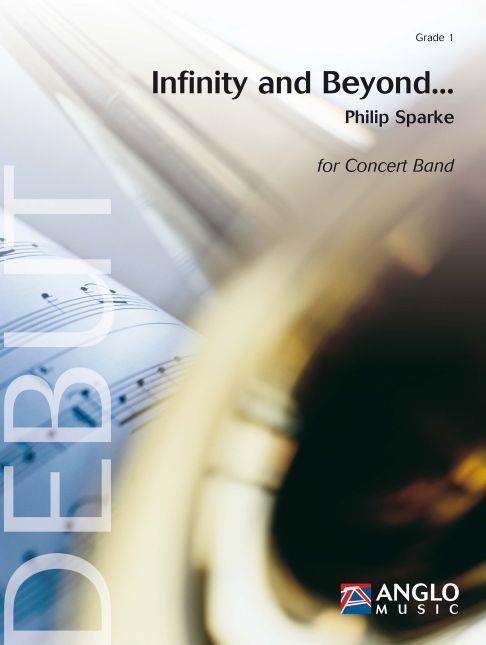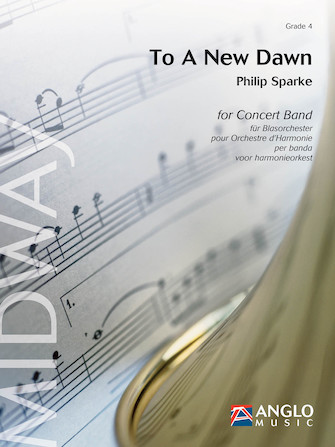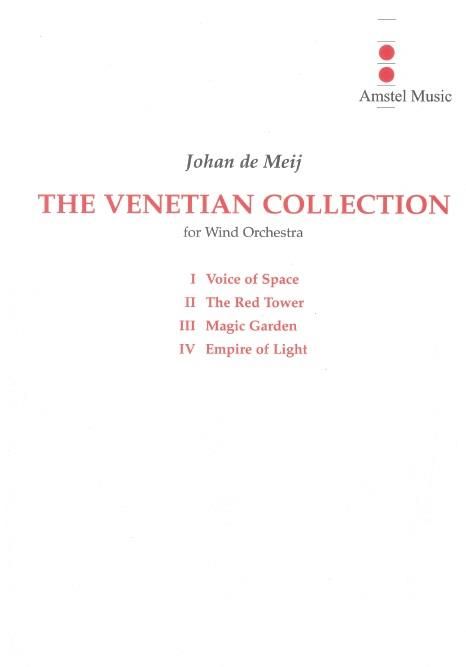Results
-
 £69.99
£69.99Infinity and Beyond... (Concert Band - Score and Parts) - Sparke, Philip
The last decades of the 20th century saw man's first steps in space exploration. Since the first moon landing by Neil Armstrong in 1969, these adventures in outer space have captured the public's imagination and have given birth to scores of science fiction movies, books and TV series that have tackled the subject. Infinity and Beyond... takes as its inspiration the wonderful film scores of composers such as John Williams and Jerry Goldsmith, who have almost invented a style which could be called 'space music'.Opening with a rhythmic bass figure, Infinity and Beyond... begins with a robust introduction in 3/4, which leads to the main theme in 4/4, played by the full band. A short bridge passage, utilising the interval of a fourth, leads to a modal central section, featuring first the trumpets and then played by the whole band; this in turn leads back to a repeat of the introduction until the main theme returns to bring the piece to a close.Duration: 3:00
Estimated dispatch 7-14 working days
-
 £152.99
£152.99To A New Dawn (Concert Band - Score and Parts) - Sparke, Philip
To A New Dawn was commissioned by the United States Continental Army Band - Captain Timothy J. Holtan, Commander and Conductor.The brief was for a piece to celebrate the 3rd Millennium and it was the composer's aim to provide a work which, as well as looking forward to the challenges of the new century, also contained moments of reflection about the last one.After a bright introduction featuring the trumpets a perky theme, passing quickly through several keys, appears on the woodwinds. A solo trumpet takes up a new theme over bubbling quavers (eighth notes) and this leads to a rhythmic figure on low clarinets, followed by the upper woodwinds. A brass interlude follows and, after a short bridge passage, an oboe takes up a contrasting legato tune that builds to a climax.An andante section follows with solos for horn and flugel horn (or trumpet) and a florid flute cadenza. A passionate climax leads back to the faster music and, eventually, to a full recapitulation, revisiting the earlier material before a lively coda close the work as it began.Duration: 9:40
Estimated dispatch 7-14 working days
-
 £499.00
£499.00The Venetian Collection (Concert Band - Score and Parts) - De Meij, Johan
The Venetian Collection by Johan de Meij consists of four movements which are all a musical reflection of the four paintings of the same names from the Peggy Guggenheim Museum in Venice.Voice of Space is the first movement of The Venetian Collection. The picture on which the music is based on was painted by the Belgian surrealist artist Ren? Magritte. Along with Ensor, Permeke and Delvaux he was one of the most important painters of the 20th century.The Red Tower was inspired by the painting of the same name (La Torre Rossa) by the Italian artist Giorgio de Chirico, and was awarded first prize in the International Composition Contest in Oman. One of the towers of the mediaevalwalls of the Italian town of Soncino (home to the band for whom Johan de Meij wrote the work for) shows a remarkable resemblance to the tower in the work of De Chirico. Magic Garden contrasts starkly with the other movements of the cycle. As with the painting, Johan de Meij has tried to reflect the colourful, naive dream world of Paul Klee. The transparent texture, in which the woods play an important role, makes a striking impression throughout this serene movement.Empire of Light is also based on a work by Ren? Magritte. He was a versatile and productive artist producing over 1100 paintings and 700 gouaches. Johan de Meij used the painting Empire of Light as his theme for the last movement of his Venetian Collection. Duration: 35.00
Estimated dispatch 7-14 working days
-
 £148.00
£148.00Empire of Light (from The Venetian Collection) (Concert Band - Score and Parts) - De Meij, Johan
Empire of Light is also based on a work by Ren? Magritte. He was a versatile and productive artist producing over 1100 paintings and 700 gouaches. Johan de Meij used the painting Empire of Light as his theme for the last movement of his Venetian Collection. Duration: 9.30
Estimated dispatch 7-14 working days
-
 £57.50
£57.50Battle Hymn of the Republic (Concert Band - Score and Parts) - Higgins, John
At last...a creative, inspirational setting of this patriotic masterpiece arranged especially for the needs of developing bands. It's full of contrasts and effects that are normally found only in more difficult literature.
Estimated dispatch 7-14 working days
-
 £57.50
£57.50The Stars and Stripes Forever (Concert Band - Score and Parts) - Sousa, John Philip - Curnow, James
Here, at last, is a very playable verion of John Philip Sousa's best-known march which has been declared the National March by Congress. It's a great addition to any young band's library.
Estimated dispatch 7-14 working days
-
 £64.50
£64.50El Capitan (Concert Band - Score and Parts) - Sousa, John Philip - Bullock, Jack
When one thinks of "marches," one almost automatically thinks of John Philip Sousa. Perhaps the greatest march writer of all time, he composed literally hundreds of these works. El Capitan ranks high in his list of classics. The first several strains are written in six-eight, and the last strains in two-four, giving a unique change of character. This scoring has reduced the technical difficulties while keeping the integrity of this well-known work. Duration: 2.20
Estimated dispatch 7-14 working days
-
 £53.95
£53.95Annabel Lee (Concert Band - Score and Parts) - Wagner, Douglas E.
Based on the exquisitely beautiful poem of the same name, by Edgar Allan Poe, Annabel Lee by composer Douglas Wagner is a charismatic work, with the main thematic material reoccurring as a dialogue between the two lovers in counterpoint in both the first and last section. The middle segment paints a musical picture of a cold, desolate, windswept shoreline . . . a place where this portrait might have been discovered. Wonderfully flowing lines with fascinating harmonic colouration. Duration: 4.30
Estimated dispatch 7-14 working days
-
 £72.99
£72.99Hollywood Milestones (Concert Band - Score and Parts) - Higgins, John
A blockbuster medley that includes some of the best musical icons from the last twenty-five years of film history. Includes: Theme from Jaws; Where Do I Begin (Love Story Theme); Star Trek - The Motion Picture; Raiders March; Chariots of Fire; Back to the Future; Theme from E.T.; Beauty and the Beast; Theme from Jurassic Park; Forrest Gump - Main Title; Main Title - Apollo 13.
Estimated dispatch 7-14 working days
-
 £139.99
£139.99Aroldo (Concert Band - Score and Parts) - Verdi, Giuseppe - Cesarini, Franco
Aroldo, number 22 of the 32 operas written by Verdi, is certainly not one of the best-known works from "the genius of Busseto." Written in 1857, it is in fact a remake of the 1848 opera Stiffelio, which told a story of adultery and which was censored for its "indecent" content. Verdi found the censorship of Stiffelio unacceptable, and with a performance in Verona approaching at the start of 1851, he wrote to his editor, Ricordi: "If my libretto is censored, it will not be possible to obtain the effect I desire, so I would rather wait until I can rewrite the last scene." But the modifications to Stiffelio did not stop there. The setting, the historical period and the finale were also completely changed. In the process of converting Stiffelio to Aroldo, Verdi no doubt succeeded in strengthening certain moments. However, the fame of the three operas he had written in the meantime - Rigoletto, Il Trovatore and La Traviata - did not allow Aroldo to receive the recognition it deserved. The opera's symphony is indeed a superb work and contains moments of outstanding lyricism. The trumpet solo in the introduction is the longest written by Verdi for this instrument.Duration: 8:45
Estimated dispatch 7-14 working days
